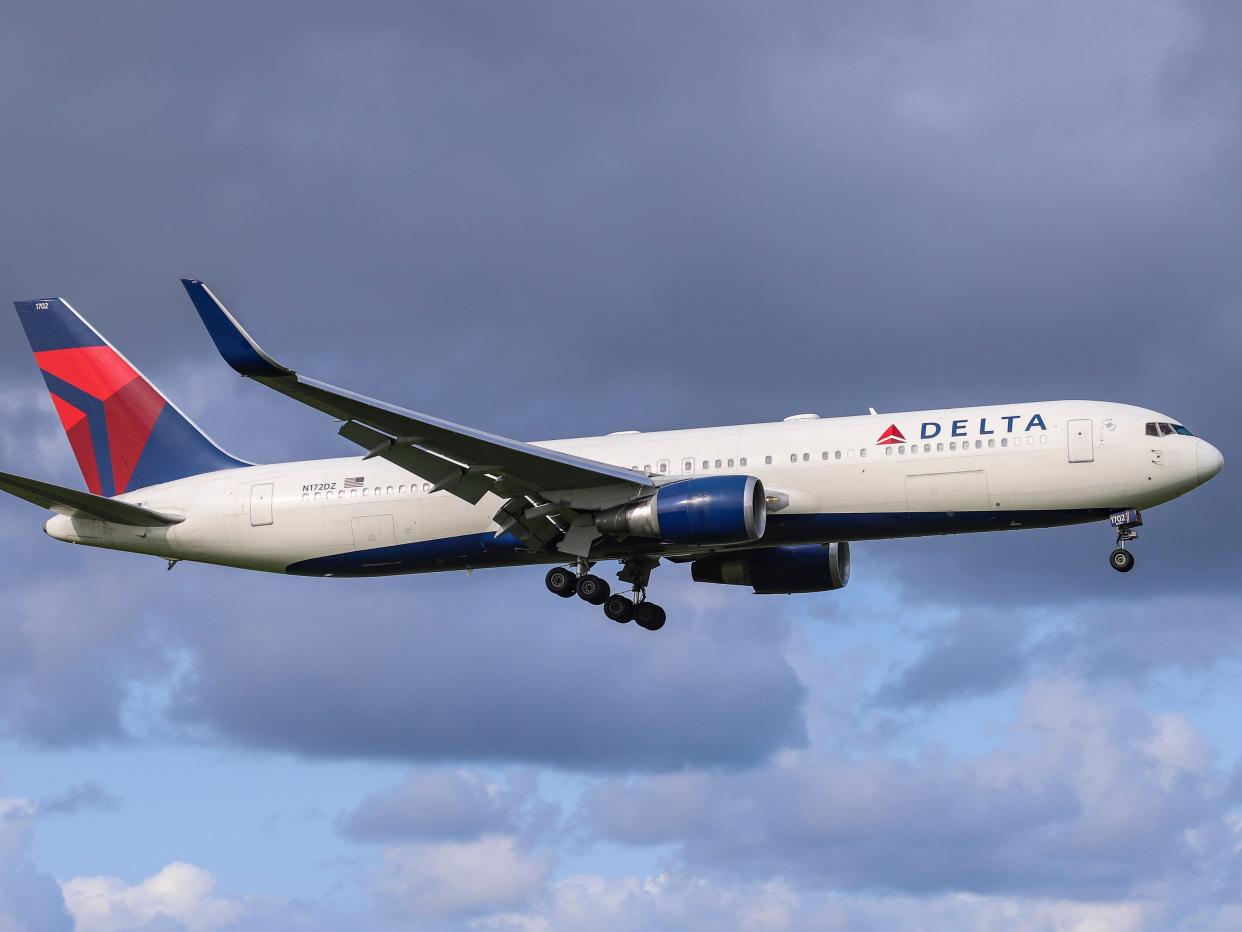Delta has an aging plane problem and the pandemic is forcing the airline to finally address it

Nicolas Economou/NurPhoto/Getty
Delta Air Lines is often leading the charge when it comes to innovations in the airline industry but a top criticism is that its planes are too old.
The country's second-largest airline has the second-oldest fleet out of the big four international airlines.
The coronavirus pandemic is forcing Delta to finally address this issue with older models being retired in favor of new jets like the Airbus A220.
Changes are coming to America's second-largest in the next half-decade, and flyers should be excited.
Delta Air Lines has retired or announced the retirement of six aircraft types since March in a sweeping fleet overhaul that's long overdue. A key criticism of the airline in recent years has been the age of its fleet of over 800 aircraft.
Out of the big four US airlines including American Airlines, Delta Air Lines, United Airlines, and Southwest Airlines, Delta now has the second oldest fleet with an average age of 14.6 years, according to Planespotters.net. American Airlines and Southwest Airlines, by comparison, have fleets with an average age of 11.1 years and 12.5 years, respectively, while United's is 16 years.
In June, Delta retired its McDonnell Douglas MD-88 and MD-90 series aircraft that had been faithfully flying passengers since the 1980s, its old age hidden by new paint jobs and interior upgrades. And while there's nothing inherently wrong with flying on an old plane that's well-maintained, there comes a time when airlines give up on them and stop upgrading them with the latest and greatest features.
Flyers on an Airbus A220, for example, are treated to in-flight entertainment screens, in-seat power, and quiet cabin, all thanks to recent upgrades and innovations. The McDonnell Douglas aircraft, with a similar seat count and layout, had none of those features. Aging aircraft can also be more prone to mechanical issues that can delay flights as older parts break, replacement parts become harder to find, and planes experience the normal wear and tear that comes with old age.
Less than a month before the McDonnell Douglas aircraft were retired, Delta announced in May that its largest aircraft, the Boeing 777-200, would also be retired by the end of 2020. It's one of Delta's smallest fleet types and typically served the airline's longest routes to Australia, India, South Africa, as well as the more popular routes to Europe and Asia.
September just saw the retirement of the Boeing 737-700 sub-fleet as part of a "fleet simplification" effort. Only 10 aircraft comprised the 124-seat aircraft fleet, delivered from 2008 to 2009, according to Planespotters.net.
Five more years of retirements
Delta also announced in its most recent 8-K filing to the Securities and Exchange Commission that two more Boeing sub-fleets including the 717 and 767-300ER will be retired by 2025, while its Bombardier CRJ-200 regional jets will stop flying by 2023.
The larger 767 wide-body is currently a staple for Delta's international flights as one of its main workhorses and also serves the ever-popular transcontinental routes between New York and California. Its interior product actually includes seat-back entertainment screens and in-seat power but it's also one of Delta's oldest fleet types with an average age of 24.2 years, according to Planespotters.net.
The slightly younger 767 still in Delta's fleet, the 767-400ER, will be sticking around a bit longer and Delta is investing in giving those aircraft a brand-new Delta One business class product.
The Boeing 717 fleet with an average age of 19.1 years was acquired from Southwest Airlines following its merger with AirTran Airways in 2011. The short-haul aircraft were a step above regional jets but most onlookers knew that their stint would be temporary. Delta never bothered to even install seat-back entertainment screens on the aircraft.
New planes aren't without growing pains
Young aircraft come with their own challenges, as the big four US airlines know all too well. The Boeing 737 Max promised new levels of efficiency only to be grounded for over a year and a half, and counting, due to an initially undetected fatal flaw. Engine issues with the Boeing 787 Dreamliner saw costly repairs and extended downtimes.
Delta was spared by not purchasing either aircraft, showing a penchant for Airbus aircraft in its latest renewal.
Ultimately, the new aircraft additions will benefit passengers and increase reliability among the fleet. The Airbus A350-900 XWB and A350-900neo have proven to be fan favorites for airlines and passengers alike, incorporating passenger-friendly amenities while offering lower fuel costs.
Delta recently augmented its Atlanta-Johannesburg route, the longest one in its network, replacing the Boeing 777-200 with the Airbus A350-900 XWB. Passengers will undoubtedly notice the difference on the greater than 15-hour flights as the Airbus jet offers a lower cabin altitude and mood lighting, which both reduce jet lag.
November will also see the expansion of the popular Airbus A220 fleet type as Delta takes delivery of the larger A220-300. Salt Lake City will be the aircraft's first base and then it will likely expand across the country as more models arrive at Delta.
Though the remaining retirements will span the next half-decade, Delta flyers can look forward to a new and improved fleet.
Read the original article on Business Insider

